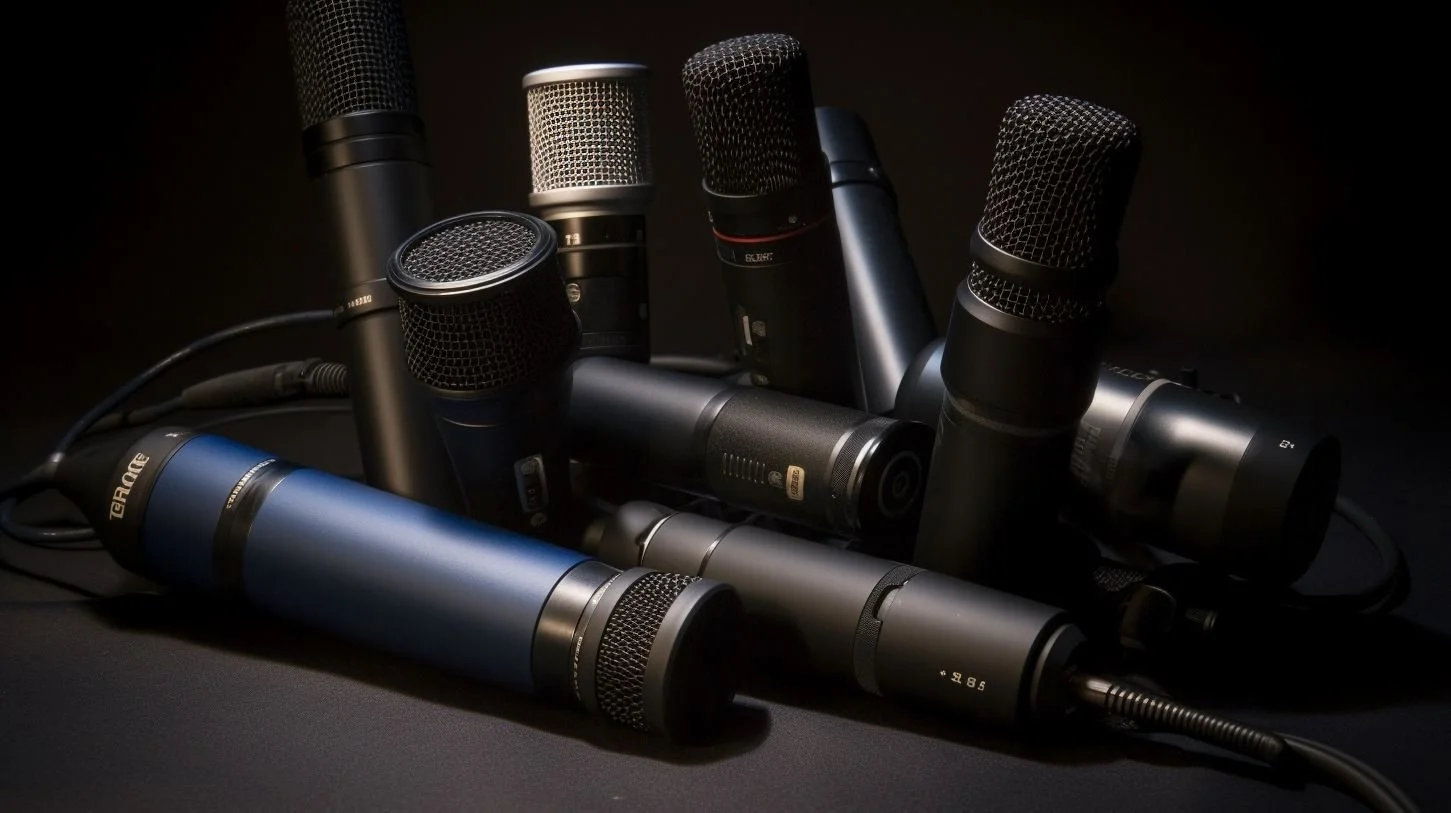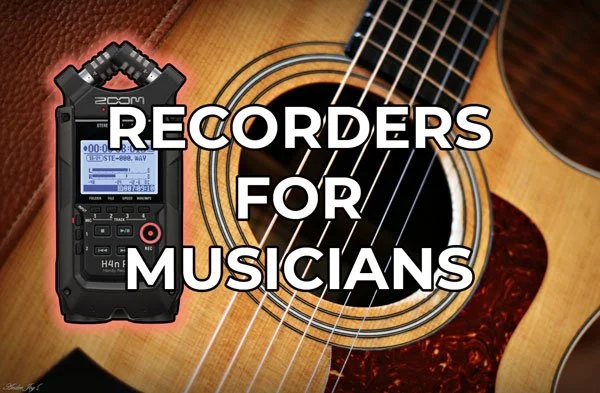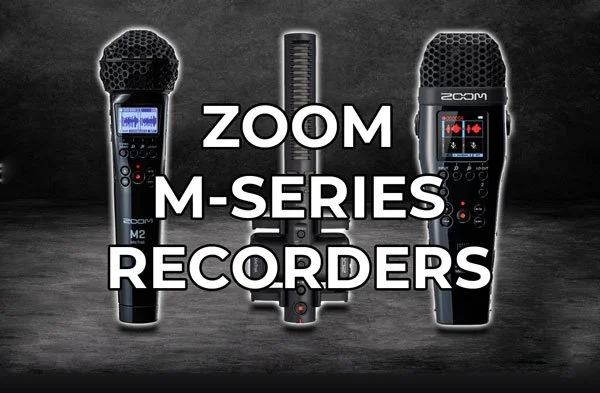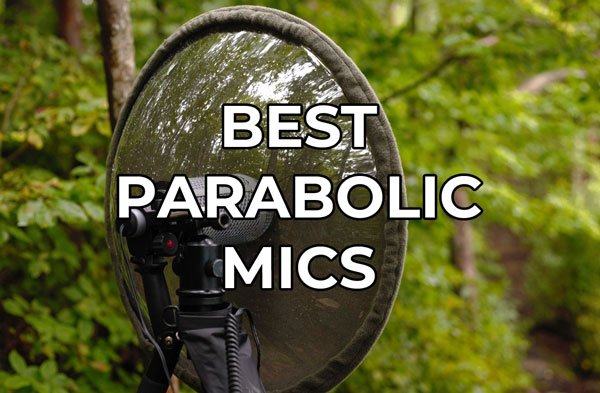Best Shock Mount for Shotgun Mics (Location Sound)
Learn which shock mount is best for you in this detailed buyer’s guide.
The term “pencil microphone” applies to any microphone that has a long, thin and cylindrical construction. They are small-diaphragm condenser microphones and are available in many different pickup patterns.
Shotgun, omnidirectional, cardioid and bi-directional microphones are all available as pencil condensers.
Most field recording microphones fall into the “pencil” category and the shock mounts listed in this article will work for most small-diaphragm condenser mics.
Links on this page are affiliated with Sovrn and Amazon Associates networks.
To jump straight to the best shock mounts, click here.
To navigate to a different section, click on the topic that interests you below. You can return to the top of this page at any time by clicking the “TOP” button in the bottom-right corner.
Table of Contents:
Reason for Writing
Soon, I will be upgrading my sound kit to include a pair of AT4022 pencil microphones. They ranked as one of the best cost-to-performance options in my research of the quietest microphones for field recording.
I will be needing a shock mount for them and I want to get the best one for my budget. In this article, I will share my research with you so that you can make the best decision for yourself.
When I googled “best shock mounts for field recording,” there weren’t many helpful resources. So, I had to do the research myself.
First, we will go over important shock mount features and then I will give you my recommendations for different budgets and applications.
Why Do You Need a Shock Mount?
The purpose of a shock mount is to eliminate unwanted noise from your recordings. Without a shock mount, your microphone is extremely susceptible to noise caused by vibrations, handling and movement.
One of the main uses for shock mounts is in combination with a boom pole. No one can hold a boom perfectly still, and without a shock mount, those subtle movements will be picked up as unwanted noise by the microphone.
When not using a boom, mounting your microphone to a mic stand or tripod will eliminate handling noise, but without a shock mount, your mic will still pickup vibrations caused by the resonance of the stand or tripod itself.
Recording settings with motion, people, vehicle traffic or music are all environments where vibrations can be transferred from your stand to your microphones if a shock mount is not used.
As a nature field recordist, I have recorded unwanted noise when the feet of my tripod are in water. The flowing water vibrates the legs, travels up the tripod, and the noise is recorded by my microphones.
Shock Mount Parts
A typical microphone shock mount has four main components. The cradle, lyre, bar and threaded connector.
The first part in a shock mount system is the cradle. The cradle is responsible for holding the microphone in place. The inside of the cradle is coated with a rubberized grip for maximum holding strength. This design holds microphones securely and noiselessly.
Lyres get their name from the classical Greek instrument, the Lyre.
The cradle is suspended in a lyre (pronounced “liar”). They get this name due to their resemblance to the classical Greek string instrument.
Lyres are flexible ribs that can bend in any direction. They are responsible for absorbing vibrations and microphone stabilization.
The lyres connect to the bar. The bar provides support for the lyres. The length of the bar will determine the spacing between lyres. Some bars have different spacing options for the lyres, allowing for optimal support for shorter and longer microphones.
The last part of a shock mount is the threaded connector. This is the connection point between the shock mount and the mic stand or boom. Shock mounts are either threaded for a 3/8” or 5/8” connection.
How to Use a Shock Mount
Screw the shock mount to a boom pole, mic stand or tripod. A shock mount will have a 3/8” or 5/8” threaded insert. Most come with adapters for compatibility with any boom pole or mic stand.
Insert microphone into cradle. Place microphone on top of one lyre and push down with steady pressure. The lyre will slowly part until it has accepted the microphone and secured it in place. Repeat this process for remaining lyres.
Plug audio cable into microphone. Most pencil condenser mics require phantom power via XLR cable.
Secure cable. Most shock mounts have an integrated system for cable management. It keeps excess cable tidy and secure.
Enjoy noise-free stabilization ♫
Shock Mount Features to Know
Below, you will find information about the most important factors and options to consider when shopping for the best shock mount. Become an educated consumer so that you can make the best choice for your personal equipment and needs.
Cradle Diameter
Determining what microphone diameters are supported by a shock mount is the most important variable to look at. If the shock mount does not fit your desired microphone, it’s useless.
Most pencil microphones have a diameter between 19-25mm.
Always confirm that your microphone will fit before purchasing a shock mount.
Lyre Material
The material of the lyres will have a great impact on the life of your shock mount. Older style mounts use rubber bands and plastic materials which are susceptible to warping and breaking.
Rycote has set the industry standard for lyre construction with Hytrel. Hytrel is a thermoplastic elastomer that combines the flexibility of rubber with the durability of thermoplastics. As a bonus, it also has great sound dampening abilities with extremely low resonant frequencies of 14.5Hz and 29Hz.
This makes any vibrations of the Hytrel virtually inaudible to humans. This is a big improvement over rubber shock mounts, which have resonant frequencies of 32Hz and 64Hz, both within the range of human hearing.
Bottom line: Hytrel is the best material for shock mounts. It has great sound dampening capabilities and is way over-built for supporting a microphone. A Hytrel lyre is virtually indestructible and will last many generations.
Cable Management
A nice-to-have feature on a shock mount is cable management. Some shock mounts have a system for securing microphone cables to.
Not only does this make for a clean-looking setup, it also prevents excess cable from rubbing against wind protection or banging against a boom pole.
Threaded Connector
The last feature to consider on a shock mount is the size of threaded connector. Connectors will either be 3/8” or 5/8” thread.
If the threading does not match your needs, it is not a deal breaker. Inexpensive adapters exist for this purpose and most shock mounts include one in the box.
Know what you will need ahead of time so you can use your new shock mount immediately!
Best Shock Mount by Category:
To better organize this section, I’ve listed the best shock mounts for unique situations below. Click whichever category suits your needs best to go directly to that recommendation.
Best Overall
Rycote INV-7HG mkIII:
The INV-7HG mkIII is the best selling suspension system because of its performance and versatility.
The 7HG mkIII features Hytrel construction, offering the best durability and maximum shock and noise absorption available on the market.
The cradle accepts almost any microphone, with a huge range of compatibility from 19 to 34 mm in diameter.
The shock mount can be angled up or down and secures tightly in place with a heavy-duty star knob. This is essential for booming.
The solid brass, threaded base is 5/8” and a 3/8” adapter is included.
Just above the brass threading is an integrated cable management clip, also made from Hytrel.
The effective, simple, and compact design make the INV-7HG the best shock mount for boom poles and most applications.
Specifications:
Microphone Diameter: 19 to 34mm
Lyre Material: Hytrel
Cable Management: Yes
Threaded Connector: 5/8”
Adapter Included: Yes
Best Budget
Rode SM4-R Shockmount:
The Rode SM4-R is a popular option because of its price, performance and features.
The lyres on the SM4-R are manufactured by Rycote and are constructed from Hytrel for the best performance possible (if you can’t beat ‘em, join ‘em).
There are 4 possible lyre positions. Pictured is the furthest spacing which is best for longer mics. Each lyre can be moved into one of the empty slots, which is better suited for shorter mics.
The microphone cradles fit mics from 19 to 22 mm in diameter.
The cable management system is very smart. It has a step-down design to snugly hold different cable diameters.
A better view of the cable management system on the SM4-R.
The threaded mount on the bottom is 5/8” and comes with an adapter for 3/8” to fit any boom pole or mic stand.
Specifications:
Microphone Diameter: 19 to 22mm
Lyre Material: Hytrel
Cable Management: Yes
Threaded Connector: 5/8”
Adapter Included: Yes
RELATED: Shotgun Microphone Buyers Guide
Best Hot Shoe System
Rode SM3-R Camera Shoe Shock Mount
The Rode SM3-R hot shoe shock mount is the exact same system as the previously mentioned SM4-R, but with a hot shoe connector.
The lyres are constructed from Hytrel and are manufactured by Rycote.
The mic cradles accept microphones ranging from 19 to 22mm in diameter.
The integrated cable management system can snugly fit varying widths of cables.
There is no way to adjust the angle of the shock mount when attached to the camera. The bottom of the hot shoe has female 3/8” threading.
Specifications:
Microphone Diameter: 19 to 22mm
Lyre Material: Hytrel
Cable Management: Yes
Threaded Connector: 3/8”
Adapter Included: No
Best for Longer Mics
Rycote INV-7 Suspension System
The INV-7 offers the same quality construction as the best overall INV-7HG, but has a longer bar.
The Hytrel lyres are spaced 4.72” (120mm) apart, maximizing stability of longer microphones.
If your microphone is longer than 10” (250mm), the INV-7 would be a good match.
The cradles can accept microphones ranging in diameter from 19 to 25mm.
The integrated cable management clip is made from Hytrel, offering longevity and good grip for most cable sizes.
The solid brass threaded mount is 5/8” and a 3/8” adapter is included to fit any boom pole or mic stand.
Specifications:
Microphone Diameter: 19 to 25mm
Lyre Material: Hytrel
Cable Management: Yes
Threaded Connector: 5/8”
Adapter Included: Yes
Best Pistol Grip Combo
Rycote Lyre Mount with Pistol Grip
A pistol grip is a great choice for recording birds with a shotgun mic and for other run-and-gun applications.
This Rycote option combines the best selling INV-7HG shock mount with a well-designed, pistol grip handle.
The shock mount is made out of Hytrel and fits microphones ranging in diameter from 19 to 34 mm.
There is a 3/8” threaded insert in base of the handle, should you ever need to mount the pistol grip to a mic stand or boom pole.
The handle has an awesome cable management system. Directly below the shock mount, there are three pins used to “weave” the cable through. Then, the cable is clipped into the handle itself. There is even an embedded clip for holding an XLR connector. See detailed photos below.
Specifications:
Microphone Diameter: 19 to 34mm
Lyre Material: Hytrel
Cable Management: Yes
Threaded Connector: 3/8”
Adapter Included: No
Best for DIY Projects
Rycote Cyclone Lyre Pair
If you are building a microphone enclosure and need a customized shock mount, the cyclone pair from Rycote is what you’ll need.
Purchasing just the lyres will save you money, and you’re still getting the same, high-quality Hytrel construction.
The cradle fits microphones ranging in diameter from 19 to 25 mm.
Screws are included for securing the lyres to your project.
RELATED: Best Windscreens For Shotgun Mics
Final Thoughts
I hope this shock mount buyer’s guide has helped you with your decision. Persoally, I like the pistol grip combo of the Rycote INV-7HG.
I think it offers the best build-quality and its versatility will allow me to grow with the shock mount, should I ever get into booming or want to use different diameter microphones.
Support Acoustic Nature
If you enjoyed this post and would like to help support Acoustic Nature, please consider "buying me a coffee" or becoming a Patreon with the buttons below.
As a thank you for your support, Patreon supporters receive a copy of Field Recording For Beginners, exclusive access to the full Behind The Sounds video series, nature sound library downloads, and more.
If you are unable to support the site financially, please share this post with others, or leave a comment below letting me know you enjoyed this post! Both are free and help the website grow. Thank you ♫
Thanks for reading,
-Jared





















